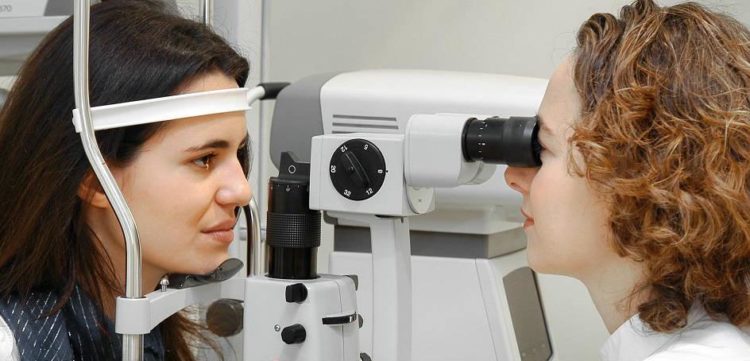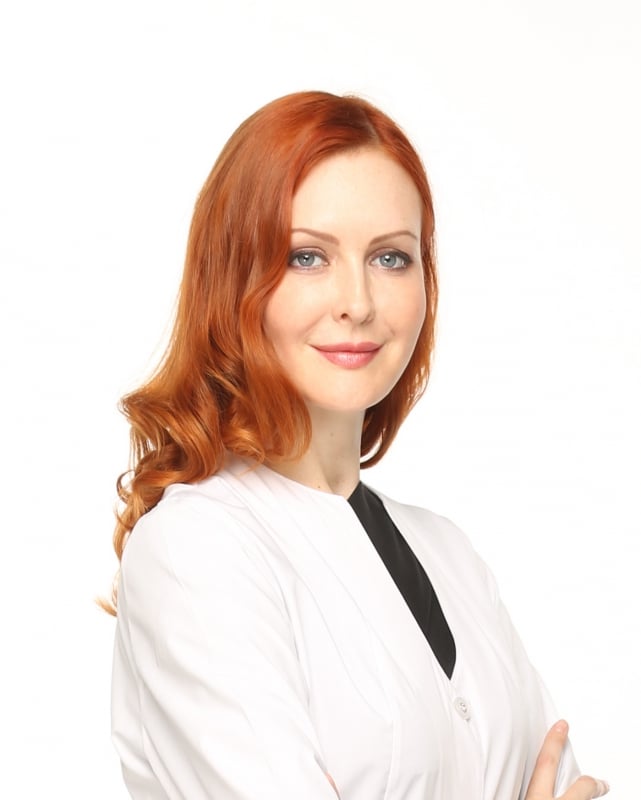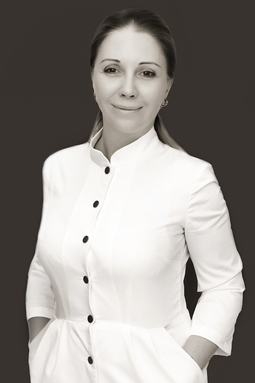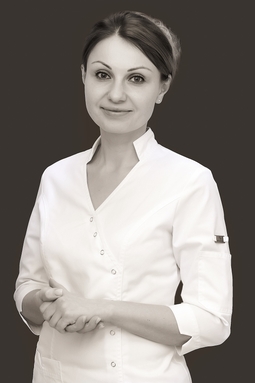Key points
The bags under the eyes are a bulge of fatty periorbital tissue in the lower eyelid area due to swelling or overgrowth. Adverse effects on the skin primarily affect its most delicate and sensitive area - the area around the eyes. The bags under the eyes can be permanent or temporary, giving the face an unhealthy appearance.
The formation of bags under the eyes depends on the individual body and can occur as early as 20 years of age or be absent in mature and elderly people.
The main causes of bags under the eyes
The eyeball is surrounded on all sides by fatty tissue that protects it from damage. The fatty tissue is called periorbital tissue. It is separated from the eyeball by a layer of connective tissue, the membrane, which prevents the tissue from extending beyond the eye socket.
Bags under the eyes appear as a result of stretching of the membrane and reduction of its elasticity or due to an overgrowth of periorbital tissue.
Causes of bags under the eyes in healthy people:
- sleep deprivation, if you sleep less than 8 hours a night
- eating foods that contain salt because they hold water in the body and cause thirst
- Bags may appear in women a few days before menstruation due to an increase in oestrogen levels, which also causes water stagnation in the body
- alcohol overdose
- age-related changes that cause the skin to lose its firmness and elasticity
It usually takes one day for the bags under the eyes to disappear completely, unless the person continues to abuse bad habits. They may appear as a result of age-related skin changes, but in this case they do not enlarge and are not combined with other symptoms.
Diseases that cause bags under the eyes
Renal failure
The first thing to rule out in a patient with bags under the eyes is kidney disease. The swelling increases rapidly (within a few hours). Other symptoms are fever, weakness, lower back pain, and changes in urine pattern (transparency, amount, colour).
All these signs characterise inflammatory kidney disease, which occurs with cystitis, sore throat and the common cold.
The loss of albumin in the urine also causes swelling. This protein is dissolved in the blood and retains fluid in the bloodstream. Normal albumin does not penetrate the membrane of the renal tubules, but in pathology this barrier becomes more permeable and large protein molecules enter the urine. The disease is diagnosed by urinalysis and ultrasound of the kidneys. It is often accompanied by arterial hypertension.
Sinusitis
Inflammation of the paranasal sinuses can also lead to swollen tissue. These sinuses are located in the bony structures of the skull and are connected to the nasal cavity. Other symptoms can also occur: runny nose, pain in the projection of the sinuses, headache and fever. Inflammation can be caused by a viral or bacterial infection. To make a diagnosis, not only an examination but also an X-ray should be performed.
This may reveal maxillary sinusitis, frontitis or sinusitis.
Allergy
Allergic diseases are also often accompanied by eye swelling. In conjunctivitis, allergies are often caused by various substances that cause the mucous membrane to redden and swell the eye. Itching and irritation also occur. Many patients have a seasonal pattern of these changes, which are associated with flowering plants.
It is important to end contact with the allergen as soon as possible and see a specialist for treatment.
Conjunctivitis
Conjunctival inflammation can be caused not only by an allergic reaction, but also by infection or chemical irritation. Bacteria usually reach the surface of the conjunctiva through poor hygiene, contaminated objects and hands. Irritation of the eye mucosa is also caused by environmental factors (smoke, dust). A visit to an ophthalmologist is needed to determine the cause of the inflammation.
Quincke's oedema
Acute allergic oedema (Quincke's oedema) is a separate group, as it is a very dangerous condition. This reaction develops rapidly and is often life-threatening. Symptoms of Quincke's oedema include dry cough, swelling of the neck and face, shortness of breath and difficulty in breathing after contact with the suspected allergen.
If these symptoms occur, an ambulance should be called immediately, as the swelling spreads not only to the subcutaneous tissue, but also to the mucous membranes and fascia.
This releases substances into the blood that greatly increase the permeability of the vascular wall to protein and fluid. Due to the swelling of the bronchial wall, the airways narrow considerably, making it difficult to breathe. A sting from an insect (wasp, bee) is often the cause of Quincke's oedema.
OPVI
Acute viral infections with respiratory tract infection can also cause periorbital swelling and conjunctivitis. Common symptoms of acute respiratory infections include runny nose, conjunctivitis, fever and sore throat. The eyes are more often affected by adenovirus infection.
Hypothyroidism is associated with a deficiency of thyroid hormones in the patient's blood. Symptoms include swelling of the hands, face, internal organ fibres, slowed metabolic processes, resulting in obesity, reduced attention and memory, bradycardia, dry skin and hair. In advanced cases, myxedema (edema of the subcutaneous tissue and skin) develops. An ultrasound examination of the thyroid gland and thyroid hormone tests must be carried out to confirm the diagnosis. Treatment is by means of substitution therapy.
Heart failure
If the appearance of bags under the eyes is accompanied by shortness of breath, heart pain and peripheral swelling, the cause may be heart failure. If the heart is disturbed, the whole body suffers from a lack of nutrients and oxygen. Swelling first forms in the legs and then spreads to other tissues and organs.
Facial oedema is a sign of life-threatening anasarca and is an extreme manifestation of heart failure. To confirm the diagnosis, a cardiac ultrasound, ECG and a number of other tests should be performed.
In men and women, the frequency of swelling under the eyes is about the same, but in children the symptom rarely occurs, so in some cases it goes unnoticed.
If the bags under your eyes are not accompanied by the above symptoms and are not associated with a medical condition, it is sufficient to stick to of such recommendations:
- get at least 8 hours of sleep a night
- do not abuse alcohol
- Drink 1.5-2 litres of water a day
- Eat a healthy diet, avoiding large quantities of salt and spices if possible
- To quickly get rid of bags under the eyes, swipe ice cubes around the eyes in the morning after waking up - the cold will constrict the blood vessels and make the puffiness disappear.
If bags under the eyes appear with the above symptoms, you should never try to treat them yourself, but rather see a doctor straight away.
Bags under a child's eyes
Bags under the eyes in children are not always associated with illness. It can normally occur with prolonged crying or crying, excessive consumption of water or salt, or after sleeping.
If the puffiness under a child's eyes is physiological, it will go away on its own within a few hours. Bags under the eyes can also be a symptom of various diseases.
In the following cases, you should see your child's paediatrician:
- The appearance of the bags was sudden. There is redness of the eyes, increased lacrimation, runny nose and restlessness. These signs are indicative of allergies, including Quincke's oedema, which requires immediate intervention.
- In addition to bags under the eyes, there is fever, headache or pain in the lower back and problems with urination. These symptoms occur with kidney disease.
- If a small child not only has bags under the eyes, but also has bulging fontanels and anxiety, this is an indication of intracranial hypertension.
- The bags under the eyes persist for a long time and do not diminish in the evening.
Bags under the eyes in pregnant women
It is normal for bags under the eyes to appear during pregnancy. This is due to fluid and salt retention in the body. Excess water is deposited in the subcutaneous tissue, which is also accompanied by increased moisture in the skin and weight gain.
However, this symptom also occurs with gestosis, kidney disease and other abnormalities in pregnant women. It is therefore advisable to see a gynaecologist in good time to rule out a serious and dangerous condition.
Which doctor should I see if I have bags under my eyes?
In order to accurately answer this question, at least a minimal examination must be carried out. Usually, in addition to a cosmetologist, you should visit your general practitioner, who will prescribe the necessary tests and refer you to a specialist if necessary.
Description
The bags under the eyes are a bulge of fatty periorbital tissue in the lower eyelid area due to swelling or overgrowth. Adverse effects on the skin primarily affect its most delicate and sensitive area - the area around the eyes. The bags under the eyes can be permanent or temporary, giving the face an unhealthy appearance.
The formation of bags under the eyes depends on the individual body and can occur as early as 20 years of age or be absent in mature and elderly people.
The appearance of bags under the eyes can be caused by hernial bulges of fat or excess fluid accumulated in the eyelids. "Puffy" bags under the eyes are usually more pronounced after sleeping, decreasing or disappearing altogether during the day as fluid drains away from the upper half of the torso due to gravity and circulation. "Fatty" bags under the eyes are always present, regardless of the time of day.
The eyeball is separated from the eye cavity by a layer of fatty tissue called periorbital tissue that performs a cushioning function.
The periorbital tissue, in turn, is separated from the eyelid skin by the orbital septum, a connective tissue membrane that holds it inside the orbit. An increase in the volume of the periorbital tissue, combined with a loss of elasticity of the connective tissue membrane and its stretching, results in an inability to retain the fatty tissue inside the orbit, which sags outward, forming a herniated bulge.
Periorbital hernias are often located at the inner corners of the eyes. They can cause a decrease in visual acuity and clarity of vision and contribute to rapid eye fatigue.
Often, fat hernias put pressure on the lacrimal ducts and glands, leading to lacrimation and skin mucus in the inner corners of the eyes. The skin folds that form in the lower eyelid make it difficult to perform proper hygiene procedures, leading to the development of eczema of the lower eyelid skin.
Opinions/feedback from cosmetologists
If the cause of the bags is swelling, then all kinds of lymphatic drainage treatments can help. In general, it is worth realising that modern cosmetology deals with the visual appearance, but in order to fully treat and get rid of bags permanently, it is necessary to address the cause of the defect.
Opinion from reputable international sources on the causes of bags under the eyes
Q&A
The most popular ways to remove bags under the eyes
Forget everything you've read on women's portals on the internet about how to remove bags under the eyes at home. Let's look at four basic approaches to getting rid of this problem.
1) FOLK AND HOME REMEDIES TO COMBAT UNDER-EYE BAGS
Effectiveness 0-20%, long term, possibility of getting rid of it permanently.
Any folk remedies should be aimed at normalising the lifestyle and eliminating concomitant diseases that may be the cause of lower eyelid masses.
Contrast compresses and herbal compresses can reduce the appearance of puffiness under the eyes.
A correct course massage of the face and the area directly under the eyes is also possible, to improve blood and lymph circulation and encourage the drainage of fluid from this area.
2) COSMETIC AIDS AND METHODS
The efficiency is close to 0%.
The use of all kinds of gels, ointments against bags under the eyes is very popular. The choice of eye creams is huge, many manufacturers produce their products in very convenient packaging with a roller for more comfortable application. There are even creams with special massagers that vibrate and rub the cream more thoroughly into the problem areas.
None of these options will help you get rid of bags and puffiness forever! No professional beautician will prescribe a cream or compress to get rid of this blemish.
Why don't creams work? Simply because creams and ointments applied under the eyes do not address the cause of the problem. No amount of hyaluronic acid in a cream can even out the topography of your lower eyelid to "smooth out" the bag! Don't waste your money and time on ointments and creams.
Among cosmetic techniques, make-up is most effective - it will visually help to 'disguise' the puffiness with colour. There are also special make-up compounds that can hide the puffiness under the eyes for up to 6-8 hours: all about creams and masks.
3) PROFESSIONAL COSMETOLOGY
Effectiveness 60-90%, results immediately, does not get rid of it permanently.
There are several ways for beauticians to correct bags under the eyes. Consider them in order of effectiveness.
Smoothing of the skin surface under the eyes with cheek and cheek area. Correction with hyaluronic acid fillers. Visually conceals bags under the eyes for up to 10-14 months. The effect is immediate after the treatment. Learn the right way to correct bags with filler injections.
Eyelid mesotherapy is a course procedure that stimulates metabolism, the intensity of lymphatic drainage and collagenesis processes. Special preparations - mesococktails - are injected into the problem area with the help of a fine needle. The effect after a series of procedures. Usually, it is advised to treat these two methods simultaneously. The first hides the problem visually, while the second reduces the risk of it occurring in the future.
Apparatus treatments to improve blood circulation and bodily fluids in the under-eye area: microcurrent therapy, RF lifting, light therapy.
Apparatus procedures that affect the density, elasticity and general condition of the skin under the eyes (reducing the stretching of the skin, and therefore the puffiness or puffiness itself). This type of treatment includes needle and conventional RF lifting and laser rejuvenation procedures.
4) BLEPHAROPLASTY
Effectiveness 90-100%, results immediately after surgery.
The most radical method is a surgical procedure called a blepharoplasty. It aims to remove excess skin as well as fat hernias. In fact, lower eyelid plasty is a simple and safe procedure that can be performed under local anaesthetic. Gentle techniques are used, with minimal incisions. To maintain the best results, surgery can be performed in combination with laser resurfacing of the skin around the eyes.
Recovery is quick enough, you can go home the next day and go about your daily activities. The results after blepharoplasty are long-lasting.
Feedback from private users
As for the effectiveness of the mask, it is there. But, you shouldn't expect a super effect from such patches. The bruises have lightened slightly and the skin is fresher and smoother. The bags, on the other hand, didn't go anywhere. Most likely, a systematic application is needed here. Once is clearly not enough.
I wasn't expecting a wow effect. But I am happy with the result.
The feeling of dryness on the skin is gone
The skin lightens slightly
No creases on the skin in the morning
"Dry" wrinkles get smaller.
As an 'express' product, it's a decent product. However, I suspect that if your skin is prone to allergic reactions, using this product may cause discomfort.
It has NO effect on age-related skin changes! The glow and everything is great, but the wrinkles, after almost 5 months of use, are BEAUTIFUL! I wish it was the other way around....
Before and after photos
Causes of bags
Men
The eye area for each of us, whether male or female, is the area of the face that we most often look at when we first meet each other and the area that each of us most often pays attention to when seeing our reflection in the mirror. Therefore, bags and blue eyes are certainly not a good looker and it's hard to disagree with that.
In addition, the presence of such "defects" gives the face a "tired" and unhealthy appearance. These people tend to look older than their age.
Conclusion
The availability of very effective injectables and 'serious' professional laser techniques in many cases makes it possible to achieve a significant reduction of bags under the eyes and significant skin rejuvenation without resorting to surgery.




































